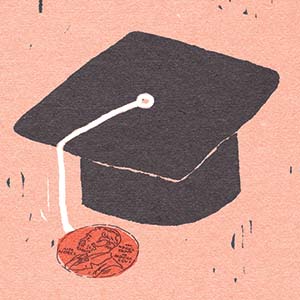
Amherst has 0.00019 Nobel laureates per capita. That may not sound like many, but according to a recent article in Nature, it places the College among the top Nobel-producing undergraduate institutions in the world.
The October 2016 article, “Where Nobel Winners Get Their Start,” reported on the research of psychologist Jonathan Wai and physicist Stephen Hsu, who “examined the 81 institutions worldwide with at least three alumni who have received a Nobel award in any of the six categories between 1901 and 2015.” For each school the researchers divided the number of laureates by the number of alumni. France’s École Normale Supérieure came out on top, followed by Cal Tech. Amherst, at number 9, is one of two U.S. liberal arts colleges in the top 10 (Swarthmore is the other).
“What these smaller schools are doing,” Wai told the journal, “might serve as important undergraduate models to follow in terms of selection and training.”
And what is that model? The College’s four laureates, in autobiographical statements on the Nobel website, each reflect on the transformative value of an Amherst liberal arts education.
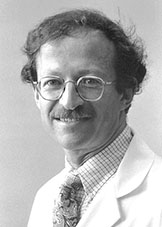
Harold E. Varmus ’61—whose 1989 Nobel in medicine honors his joint discovery of the cellular origin of retroviral oncogenes—wrote that “the most decisive turn” in his intellectual history came when he entered Amherst “intending to prepare for medical school. The evident intensity and pleasure of academic life there challenged my presumptions about my future as a physician, and my course of study drifted from science to philosophy and finally to English literature.”
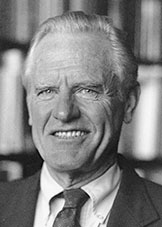
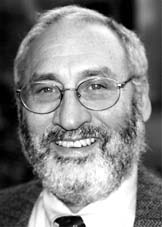
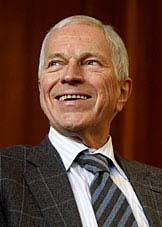
Update: A Fifth Nobel Laureate
Amherst congratulates geneticist Jeffrey C. Hall ’67, named a winner of the 2017 Nobel Prize in Physiology or Medicine. Hall and fellow scientists Michael Rosbash and Michael Young were recognized for their discoveries of the molecular mechanisms controlling circadian rhythms.
Hall is the former Libra Professor of Neurogenetics at the University of Maine and a professor emeritus at Brandeis University.
Read an interview with Hall on the Nobel site.
Thanks to Hall and his colleagues, “we now know that all multicellular organisms, including humans, utilize a similar mechanism to control circadian rhythms,” the Nobel Prize committee said. “The paradigm-shifting discoveries by the laureates established key mechanistic principles for the biological clock.”